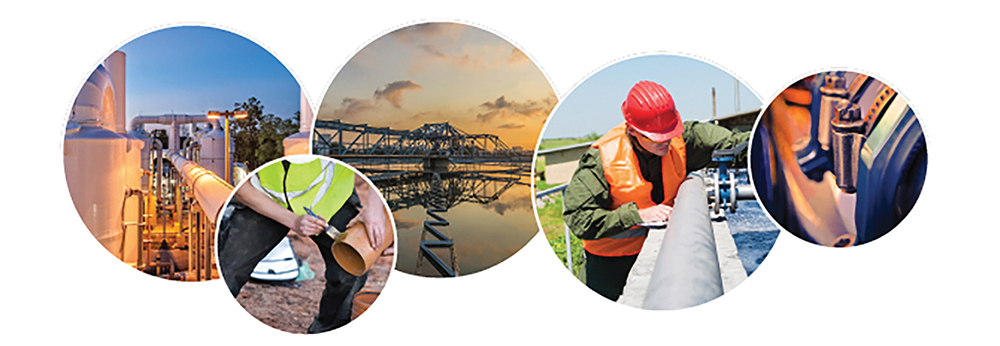Water Industry Journal speaks to Daniel Scott, Head of Asset Management Transformation at SEAMS, about the unique challenges facing the industry and why it’s time the industry rethought its approach to asset management.
 At any given time, on any given day, in households around the country, you can be assured that someone, somewhere, will turning on a tap to have a drink of water or to make a cup of tea. Water is the backbone of our daily lives, without it we couldn’t complete the numerous everyday tasks we take for granted – but even more importantly, we simply couldn’t survive without a steady, clean supply. Water is critical to life.
At any given time, on any given day, in households around the country, you can be assured that someone, somewhere, will turning on a tap to have a drink of water or to make a cup of tea. Water is the backbone of our daily lives, without it we couldn’t complete the numerous everyday tasks we take for granted – but even more importantly, we simply couldn’t survive without a steady, clean supply. Water is critical to life.
For any business supplying a critical part of the infrastructure the pressure to deliver and perform is immense. Failure to do so has huge repercussions for customers, for the country and for the businesses themselves, with regulatory rewards and penalties in place. With over a decade’s experience working for London Underground, responsible for their asset strategies, long term asset investment and maintenance plans, Dan is well placed to understand the pressures on any business that delivers a public service. For both rail and water are part of the 13 national infrastructures, including energy, defence and the emergency services, on which the UK depends.
The similarities between the two industries are striking, both the water and the rail industry face the challenge of utilising assets on multiple sites, spread across a huge geographic area. In both cases, their assets are there for the long term – so when planning a new investment, it is all the more important to make the right decision. Again in both industries, there are legacy issues too, with an existing infrastructure that at least in part, dates back to the Victorian era, and the pressure on these ageing assets is growing.
However, as Dan explains, there are certain challenges facing water companies that are unique to the industry, making asset management particularly complex: “Many of the assets utilised in the water industry are out of sight and underground. It is like they are in a black box, that you can’t see into or readily gain access to without causing service disruption, so it’s difficult to know your assets’ condition.”
Aside from the resilience of the assets themselves, the water industry faces the challenge of planning and providing water services in the light of climate change, the scarcity of water, and the growth in population. All of which has to be achieved with affordability in mind and within a framework of performance commitments, failure to meet those commitments, can incur a penalty.
Balancing risk and performance, and knowing where best to make an investment is the crux of the matter, and for this, accurate modelling is vital. Modelling is the tool that enables the industry to predict the outcome of various courses of action, understand their implications, and plan ahead accordingly. To see, in effect, what can’t be seen in that black box underground.
However, as Dan observes: “All too often complex models are built to predict asset performance, but no reviews are carried out to find out if those predictions were accurate. Models are frequently based on out of date information that is no longer relevant – making the predictions inaccurate – yet no one picks up on this if there are no reviews. One way in which asset management can be transformed is to make reviews integral to modelling.”
The team at SEAMS has worked with clients to incorporate a review process into their modelling and close the loop between those models and what is happening out in the field. Their award-winning Enterprise Decision Analytics software allows organisations to capture and use data in modelling, and evaluate it at regular intervals – daily, weekly or monthly for example. Meaning predictions can be checked against what happened, and both modelling and performance improved.
Assessing the accuracy of model predictions, then updating and refining the models – the feedback review loop – is crucial to ensuring models work as well as possible. As Dan goes on to say: “A model that is regularly reviewed and updated, allows you to make more accurate predictions and more informed decisions, enabling you to target investment where it will be most effective.”
The pressures on the water industry are immense, and they are growing, the challenges lying ahead mean it is time the industry rethinks how it approaches asset management. Ultimately, water companies that employ a decision analytics tool to assist their asset management make more effective use of their resources, understand the implications of their actions better, improve business efficiency and deliver a better service to customers.
SEAMS provides software, analytics and advisory services which improve business performance, assisting asset-rich organisations in making informed and efficient decisions. Their consultants have helped water companies to develop their analytical capabilities in order to better balance risk, performance and investment. Typically SEAMS helps their clients to achieve up to 20% savings in capital and operating costs.
www.seamsltd.com.



